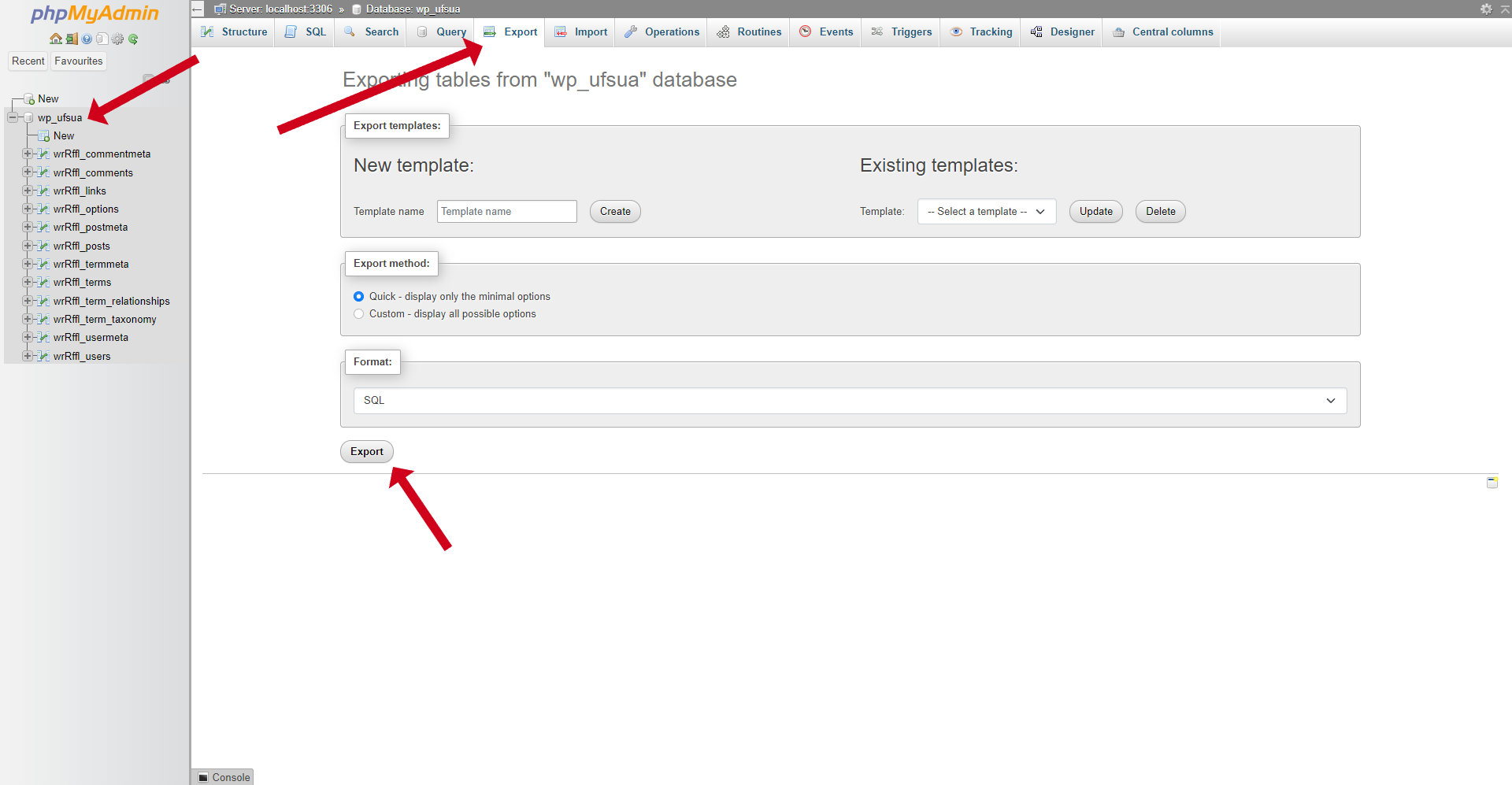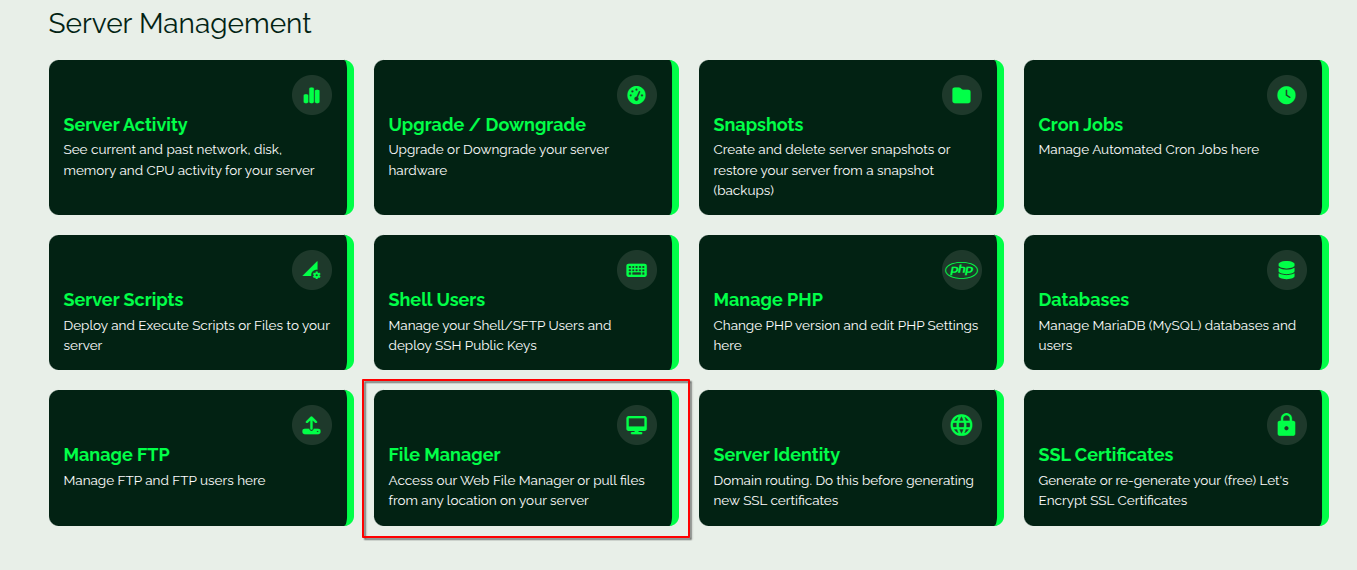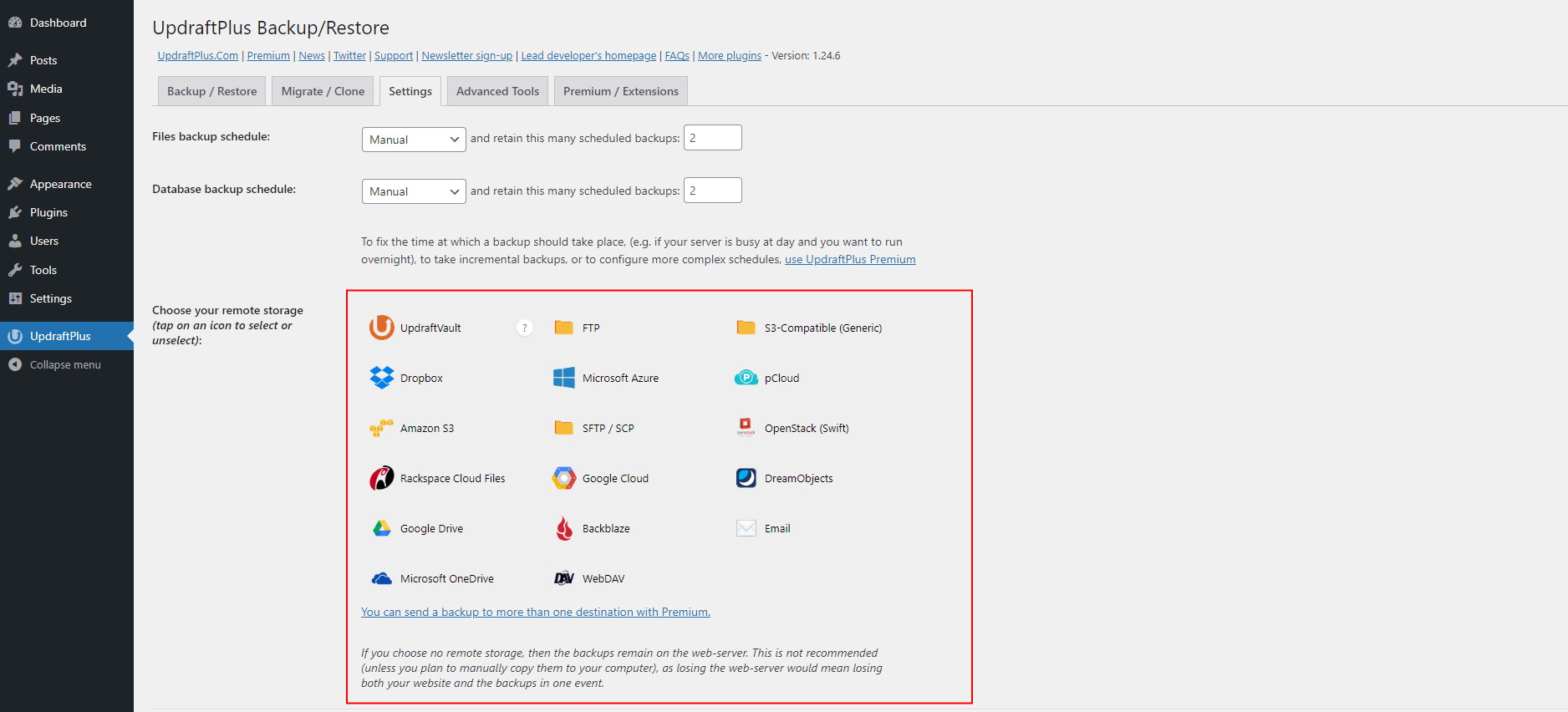Introduction
Overwhelmed by cPanel’s endless options and confusing setup? You’re not alone. Many WordPress site owners are switching to Webdock because it simplifies hosting without sacrificing performance.
This guide will show you how to migrate your site smoothly, providing a more efficient and user-friendly experience. Let’s get started and change the way you manage your WordPress site.
cPanel is Good. Webdock is Better:
Due to several key features, Webdock is a compelling option for managing your WordPress site. One significant advantage is its free full server snapshots and application-level backups, which help ensure the security of your data.
With mid-range plans (check the pricing screen for this), Webdock includes free transactional emails through Postmark, which is known for its excellent deliverability.
Additionally, you can set up email forwarding with ImprovMX at no extra cost.
Regarding user experience, Webdock’s interface is designed to be straightforward and intuitive, making it easy to navigate with organized options.
In contrast, cPanel, while functional, can overwhelm users with many unnecessary choices for managing WordPress sites, which may hinder navigation. The same goes for the installation. It takes anywhere around 30-40 minutes to install itself on a VPS. Webdock has no additional set-up time.
On the pricing side, Webdock offers its control panel for free, providing industry-standard performance at a fraction of the cost of cPanel. You just pay for the hardware.
In comparison, cPanel provides a free 15-day trial but charges you few bucks per month for its control panel and additional fees for VPS services.
While cPanel is convenient, moving to a dedicated vps hosting for wordpress environment like Webdock offers significantly better performance.
Download Your Website Files
Log into your cPanel account and access the File Manager. Locate the public_html directory, which houses your entire WordPress installation. Right-click on the folder or use the toolbar to select it, then find the “Compress” option in the menu.

You’ll typically be prompted to choose a compression format. ZIP is the most universally compatible option, so select it and click “Compress File(s).” The system will create a compressed file, usually named public_html.zip, in the same directory. Depending on your site’s size, this process might take a few moments.
Once complete, you can download the zip file directly from cPanel by right-clicking again and selecting the download option.
Download Your Database File
Next, locate the database tab, select your website’s database, and click the phpMyAdmin button to access the console.
Once you’re in phpMyAdmin, select your database and go to the export tab. From there, save your database as an SQL file. This action will prompt your browser to download a .sql file to your computer. Make sure to save it and have it ready for the next steps.
Of course, you can expedite all these by taking a simple website backup, but not all web hosts provide backup options for all plans. So, I stuck to the manual method.
Do Remember…
Fortunately, my method usually leads to minimal downtime (I’ll also share tips to reduce it later). However, just because downtime is low doesn’t guarantee that all changes made during the migration will be captured.
Planning your migration for times when traffic is at its lowest is a good idea.
You might consider using tools like WP All Import/Export to handle any new data that was not included in the initial transfer.
Another option is to use a maintenance plugin to temporarily pause your live site until the migration to Webdock is fully completed.
Set Up Your Server & WordPress on Webdock
Go to Webdock and create a server that provides the WP add-on for your WordPress VPS hosting. You can select either Apache or NGINX for your server software, and I recommend opting for NGINX due to its efficiency.
Once your server is up and running, access its dashboard on Webdock. Find the pencil icon next to the Alias section in the Overview tab.
Enter your website’s main domain in the designated column. Although you would usually check the domain first, to reduce downtime, it’s best to directly assign your website’s domain as the primary one.
Expect the setup to take around 3-4 minutes. If an error message appears, just disregard it for now; it’s not a concern at this stage.
Return to the overview page of your server, then scroll down to find the Manage WordPress section.
You’ll need to install WP-CLI on your server. Click the appropriate button to start the installation process. Once WP-CLI is ready, select the Install WordPress Now option. This will display a form where you’ll fill in details such as admin email, domain, path, database, and other information. In most cases, the default settings will work perfectly.
Keep in mind that you won’t have the option to create your own admin password, as Webdock generates one automatically for you.
Import Database Backup
After you’ve installed WordPress, access phpMyAdmin by clicking the small database icon found in the credentials tab.
When prompted, enter your admin username and password.
Find the database associated with your WordPress site, select all tables within it, and then proceed to drop (delete) them.
Next, go to the import tab. Here, you can either drag and drop the .sql file you downloaded from cPanel or manually select it from your computer. This SQL file will fill your database with all the essential data.
Finally, open the “wp_options” table and check that both the siteurl and home option_names include the https:// version of your website’s URL.
Transfer Website Files
After importing and confirming your database, go ahead and install the File Manager from the overview section, then log in.
Inside the file manager, use the option to select all files, but remember to uncheck both the PHPMyAdmin folder and the filemanager.php file.
Proceed to delete all other files.
Next, head to the top right corner and click on the upload button. Upload the public_html zip file that you downloaded earlier from cPanel. You can either drag and drop it or select it manually from your computer.
After you’ve uploaded the zip folder, find it, click on it, and look for an option to unzip it.
Once it’s unzipped, open the new folder that appears, and you’ll see another folder named httpdocs. Enter this folder and select all the files inside. Then, click on the copy button.
In the next window that pops up, check the “Move” option while leaving the path field blank.
With your files now moved to the main directory, you can safely delete both the original zip file and the folder that was created during the unzipping process.
Connect Database & Assign SSL
Open the wp-config.php file and find the section where the database information is specified.
Update this information with the current details from your server overview.
Once you’ve made the necessary changes, save the file.
After finishing all your import, it’s a good idea to disable and remove the File Manager. Though it’s password protected, it can still pose a security risk, so it’s best to delete it once you’re done. You can find a quick option to remove the File Manager in the area where you initially enabled it. Of course, you may reinstall the file manager whenever needed.
Next, update your domain’s DNS settings so that they point to your Webdock VPS IP address using an A or CNAME record.
As mentioned, head back to your server overview, look for the Alias section, and click the check domain button. If everything appears correct in the validation section, set the domain.
This step will also regenerate your site’s SSL certificates. And that’s it—your WordPress website is now live on Webdock with minimal downtime.
Use A Backup Plugin: A Quicker Method
The method described earlier is free and typically dependable. However, it can be a bit tedious if you have a large website, a slow internet connection, or are not particularly tech-savvy. In these situations, using a backup plugin can make transferring your site to Webdock much easier.
Of the many backup and migration plugins available, I like using UpdraftPlus. While it may have its vices, it effectively completes the job. The best part is that most of its key features are free, so you won’t incur any expenses. Another excellent choice is Duplicator.
If you already have a backup plugin you prefer, feel free to stick with it. The steps are usually quite similar across various plugins. Also, it’s assumed that you can access some cloud storage for backups.
You can use any cloud storage option, even the free version of Google Drive. While it’s not necessary to have cloud storage, it can really speed up the migration process. If you prefer to go without it, that’s perfectly fine — I’ll also guide you through the steps. Just remember that if your internet is slow, forgoing cloud storage might make the transfer take nearly as long as the manual method mentioned before.
To get started, log into your WordPress dashboard. Hover over the “Plugins” section and click “Add New.” Type “UpdraftPlus” into the search bar, and when you find the UpdraftPlus WordPress Backup Plugin, hit “Install Now.” Once it’s installed, go ahead and activate the plugin.
After it’s activated, you can take the introductory tour or skip it if you don’t plan on using the plugin much or if it doesn’t suit your needs.
Next, head to the UpdraftPlus option in the menu to access the plugin settings. Scroll down to the “Choose your remote storage” section, select your preferred cloud storage option, and follow the provided setup instructions. If you decide against using remote storage, skip this step.
After completing the setup, navigate to the Backup/Restore tab. Click on the large “Backup Now” button, make sure all checkboxes are selected, and then click “Backup Now” again to start the backup process.
Give the backup some time to finish. Scroll down to find the newly created backup if you’re not using remote storage. Click on each backed-up component individually to download and store their respective zip files safely.
Finally, choose a server plan starting at €/$5.99 or more, customize your profile to fit the pricing, and deploy your server on Webdock.
You have two paths to take from here: The first option is to link your domain to your server’s IP immediately, which is straightforward but may leave your users facing a blank website for now. The second option is to adjust your computer’s host file, which I will explain shortly.
In the server identity tab, set your domain after confirming that the DNS has propagated. Then, follow the steps mentioned earlier to install WordPress.
Once WordPress is set up, access your dashboard and install UpdraftPlus or another backup plugin. Don’t forget to reconnect your storage.
Go to the Backup/Restore section. In the “Existing Backups” area, you might see a message saying, “You have not yet made any backups.” If that’s the case, click the Rescan Remote Storage button. UpdraftPlus will then search for and display any backups it finds.
If you’re not using remote storage, you can manually upload your backup files by selecting the upload backups option and dragging them into the designated area instead of seeing the “You have not yet made any backups” message.
Once your backup from the cPanel site appears, the message will change. Click the Restore button to begin the restoration process.
Make sure to select all options under Choose the Components to Restore and click Next. The plugin will start downloading the necessary files if you’re using remote storage.
Once all the files are downloaded, click Next again and wait for the process to finish. That’s it! Your WordPress site has been successfully migrated from cPanel to Webdock. Be sure to check everything to confirm it’s working correctly.
Preventing a “Blank Site” Display
If you prefer that your visitors don’t see a blank site during the migration, consider installing a maintenance plugin on your WordPress site on Webdock. This will let them know that the site is under maintenance, as mentioned in the caution section. The WordPress plugin repository has many free options.
Alternatively, if you’re comfortable with some technical steps, you can wait to update your DNS records until the migration is completely finished.
When you set your domain as the server identity, skip the Check Domains button and enter the domain directly. You may receive an error or warning, but proceed anyway.
Find your server’s IP address in the Webdock dashboard, then access your computer’s host file.
- For Windows users: Open Notepad by searching for it, right-click, and choose “Run as Administrator.” After that, press CTRL + O and go to c:WindowsSystem32Driversetchosts.
- On a Mac, Launch the terminal application. Type sudo nano /private/etc/hosts if you have an older Mac or sudo nano /etc/hosts for newer models.
- For Linux users: Open a terminal window, enter sudo nano /etc/hosts, and log in when prompted.
With the host file open, scroll down to the bottom. Here, you’ll add your Webdock server’s IP address.
Make sure to follow it with a space and include both the www and non-www versions of your domain on separate lines like this:
123.456.789 example.com
123.456.789 www.example.com
After you’ve saved the changes to the host file, exit the editor. To help your computer quickly link your domain to the Webdock server, you may need to clear its DNS cache.
Here's how to do that:
- On Windows: Open Command Prompt as an administrator and enter ipconfig /flushdns.
- On Mac: Launch Terminal and type sudo dscacheutil -flushcache.
- For Linux: Open Terminal and use the command systemd-resolve –flush-caches.
Now, you can try installing WordPress using Webdock’s WordPress manager. If you check your website’s URL at this point, you should see a blank WordPress site—this will only be visible on your own computer. Once you confirm that this setup is working correctly, you can move on to any other necessary tasks.
After everything has been completed successfully, make sure to update your DNS records. Click on Set Identity once more to generate a new SSL certificate, remove the recent entries from your host file, and clear your computer’s DNS cache again.
Conclusion
Migrating your WordPress site from cPanel to Webdock can significantly improve your hosting experience. With its user-friendly interface and strong features, Webdock provides a great alternative that simplifies hosting.
Following this guide, you can ensure a smooth migration and set your site up for better performance and security without burning a hole through your wallet. As you adjust to your new hosting environment, you will likely appreciate the time you save and the ease of management. Welcome this change and enjoy the advantages of hosting on Webdock.
Meet Aayush , a WordPress website designer with almost a decade of experience who crafts visually appealing websites and has a knack for writing engaging technology blogs. In his spare time, he enjoys illuminating the minds around him.






















